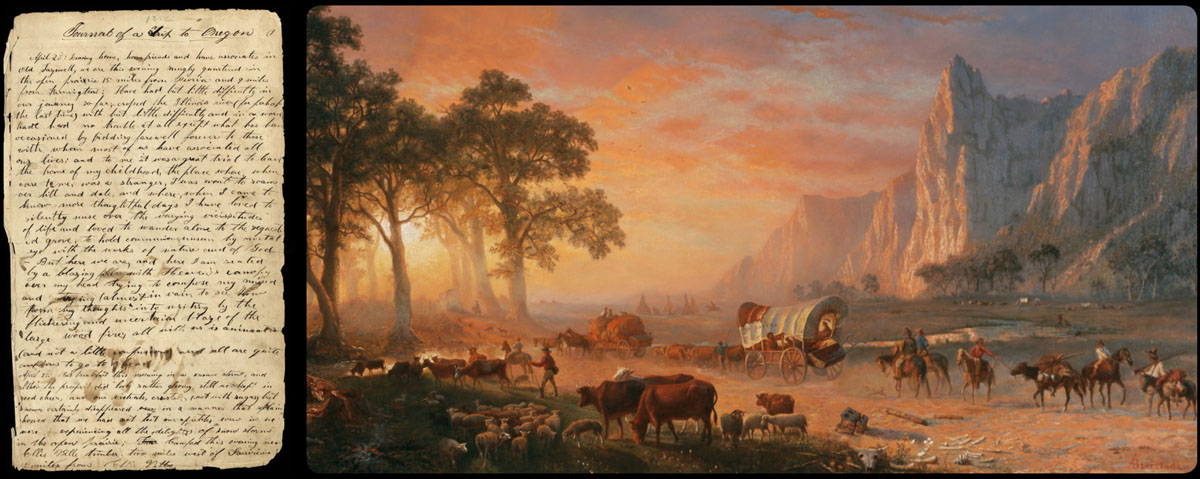Another important factor that led to the popularization of the trail was the publication of letters of emigrants that already left the east coast and had settled in the West. In these letters, published in newspapers and magazines, people told about the hardships and setbacks they encountered on the way there. But they also wrote about how beautiful the land was, and about the extraordinary things they saw on their travels. Wild Indians, herds of thousands and thousands of buffalo on the vast plains, with not a single tree in sight, as far as the eye could see. Huge waterfalls, deserts, water from springs blown into the air up to 5 feet high by some invisible force. The most exotic plants and animals, everything was described in great detail. Those who were considering the journey to the West read these exciting stories of those that had preceded them and pretty soon they decided they wanted to see all these strange and beautiful things with their own eyes. It was obvious they were infected by the Oregon fever.
In the early days of the trail, these published letters were not only an inspiration to many would-be emigrants, but they were also a great source of information. This way future overlanders knew what preparations were needed to make the journey and to make it a successful one. In the letters they could read how to avoid getting lost in the vast and unknown land, how to deal with Indians, and where, at the end of a long day, you could find sufficient grass and water for your valuable draft animals. By reading these stories future emigrants got the feeling they had a pretty good idea of the challenges awaiting them and it made the decision to go a lot easier.
In 1848 gold was found in California. It turned out to be an enormous boost for the, by now a lot less traveled, road to the Pacific coast. Was it mainly farmers and their families that left their homes in the early days, now the majority of emigrants were single men and entrepreneurs, all of them determined to strike it rich in the Sierra Nevada. In 1844 only 53 people left for California over land, five years later there were a staggering 25,000. The year after, in 1850, the number was even higher; no less than 44,000. Of course this huge increase of travel to the gold mines of California also had its effect on the Oregon trail. Merchants were well aware of the opportunities all these travelers provided them with and a lot of business activity on the trail followed. Ferries and bridges for which toll had to be paid were built, trading posts to provide emigrants with food, merchandise and fresh animals were established.
The role of the army in protecting the overlanders became more and more important, mainly because by now the Indians were pretty fed up with all these white people using their hunting grounds. Besides protection from pissed-off Indians, the military forts along the trail became a resting place and an important source of information for many emigrants. All this activity along the trail to Oregon and California meant that it became increasingly easier to travel.
But let’s not forget that despite all the improvements, it still was an enormous accomplishment to travel 2,000 miles west, in a wagon drawn by oxen, with an average speed of about 12 miles a day. Find out for yourself just what it was like, and travel with me on the Oregon Trail

